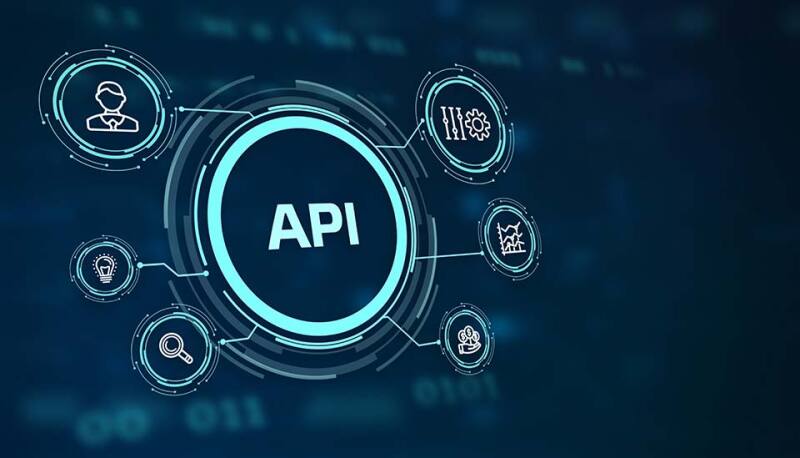
API Diagram adapted from Eising, 2017
What is API Documentation?
An Application Programming Interface (API) is a set of protocols and tools software developers use to establish connections between different applications. Upon leveraging an API, developers can facilitate communication and data exchange in a standardized and efficient manner. APIs can simplify the app development process by providing pre-established functionality for developers to integrate into new apps. Additionally, APIs help organizations overcome technical barriers that impede collaboration and innovation. APIs enable businesses to connect various applications used in day-to-day operations through common definitions and protocols, saving employees time and resources.
However, it is important to note that this convenience doesn’t come for free: simply understanding how to use an API can be challenging. Correspondingly, API documentation emerged to provide instructions on how to use and interact with an API, including functionalities, inputs, output formats, and error handling.
The documentation’s importance lies in its capacity to help developers navigate the features and functionalities of APIs effectively. Ideally, well-written and comprehensive documentation can also reduce development time, minimize errors, and improve the overall quality of the API software.
The Origins of API Documentation
The growth of object-oriented programming in the 1980s and 1990s resulted in a greater need for comprehensive documentation. API documentation transformed into detailed reference manuals that provided in-depth descriptions of functions, parameters, and return values. Technical writers specializing in API documentation emerged, requiring a deep understanding of programming concepts and the specific APIs they were documenting.
Ongoing Evolution of API Documentation

Some of the New Approaches for API Documentation Include:
- Interactive documentation: Interactive documentation makes it easier for developers to understand how to use an API. It may include live code samples, interactive tutorials, and other features that help developers experiment with an API in real time.
- API explorers: API explorers are user-friendly tools that allow programmers to examine an API’s features without writing any code. They may include live data previews, interactive documentation, etc. to aid in understanding an API’s operation.
- Developer portals: Developer portals are thorough internet sources that give developers all the information they need to use an API. Developer portals may offer tutorials, sample codes, SDKs, etc. to help create apps.
- Machine-readable documentation: this type of documentation is simpler to parse and comprehend because it employs structured data formats like JSON or YAML. It is possible to automatically produce machine-readable documentation from source code, which lessens the amount of manual labor needed to write and update documentation.
- API design-first documentation: this strategy emphasizes producing clear documentation before coding. It ensures that the documentation reflects the intended functions of the API.
Good API Documentation Provides Several Benefits for Both Developers and Organizations
- Improved Developer Experience: Ensures a smooth developer experience by providing comprehensive and accurate information about the API’s functionality, behavior, and usage.
- Increased Productivity: Developers can quickly understand and use the API, reducing the time and effort required for development.
- Better Collaboration: Facilitates better collaboration between developers, enabling them to work together effectively and share knowledge about the API.
- Lower Support Costs: Significantly reduce the support costs associated with an API, as developers can quickly find answers to their questions and resolve issues on their own.
- Increased Adoption: Help increase the adoption of an API by making it easier for developers to use and integrate into their projects.
- Improved Security: Help improve the overall security of an organization’s software ecosystem.
API Technical Writing
Now that we’ve established what API documentation is and its benefits, let’s examine the role technical writers play in producing high quality API documentation. Technical writers excel at taking complex information and putting it into an easily read format. They are responsible for understanding the technical details of the API and translating it into clear and concise documentation that can be easily understood by developers and other users.
In order to create effective API documentation, technical writers must have a solid understanding of the API itself. They need to familiarize themselves with the API’s functionality, parameters, and endpoints. They may also need to become familiar with the programming languages and frameworks used by developers who will be using the API. Once they have a good grasp of the API, technical writers can begin to create the documentation. This typically involves writing clear and concise explanations of the API’s functionality, as well as providing examples and code snippets to help developers understand how to use the API.

Some of the common responsibilities of an API technical writer include:
- Collaborating with developers and other stakeholders to understand the API’s functionality and requirements
- Writing and organizing technical documentation that includes API reference guides, tutorials, and sample code
- Ensuring that the documentation is accurate, complete, and up-to-date
- Testing and verifying the API’s functionality to ensure that the documentation is accurate
- Working with cross-functional teams to ensure that the documentation meets the needs of developers, product managers, and other stakeholders
Today, API documentation has become a vital component of software development. Many organizations invest significant resources in creating and maintaining high-quality documentation. The rise of open-source software and API marketplaces has also led to an increased emphasis on API discoverability. This value attached to such ease of use further underscores the importance of comprehensive and accessible API documentation.
How Can EDC Help With API Documentation?
If you’d like to learn more about technical writing and technical documentation writers and how they can help your business, check out some of our other content below:
Whether you need a single technical writer for a brief project or a team of consultants to produce a complete line of documentation, the quality of our work is guaranteed for you. Our clients work closely with an Engagement Manager from one of our 30 local offices for the entire length of your project at no additional cost. Contact us at (800) 221-0093 or [email protected] to get started.
